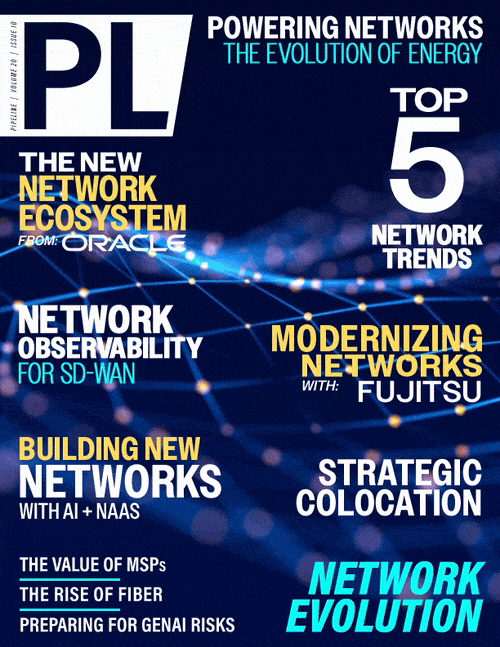The Rise of Fiber Optics:
Expanding the Digital Frontier
By: Stefanie Siegel

The global expansion of fiber optic networks is rapidly reshaping the telecommunications landscape. As service providers around the world work to meet burgeoning consumer demands and take advantage of substantial government funding, fiber optics has emerged as the cornerstone of modern communication infrastructure. This surge in fiber optic deployments is a response to the increasing necessity for high-speed, reliable internet connectivity in an era where digital interactions and data consumption are at an all-time high.
Government Initiatives
and Market Dynamics
In the United States, the Broadband Equity, Access, and Deployment (BEAD) Program represents a pivotal investment in expanding high-speed internet access, channeling $42.45 billion into this endeavor. Across the Atlantic, Europe is making significant strides in adopting advanced fiber broadband infrastructure to comply with stringent regulatory requirements. The global drive towards fiber optics underscores a critical need to deliver fast, dependable internet to an ever-expanding user base.
In today's competitive digital economy, the ability to deploy fiber networks can quickly and significantly influence a service provider's market position, customer satisfaction, and overall revenue. Whether it involves new greenfield deployments, competitive overbuilds, or upgrading outdated copper and coaxial networks, rapid fiber network deployment has become a strategic necessity for Communication Service Providers (CSPs).
The Superiority of Fiber Optics
Fiber optics technology has firmly established itself as the backbone of contemporary network infrastructure, surpassing traditional copper and coaxial cables in several key areas. Here’s a closer look at the advantages that make fiber optics indispensable:
Bandwidth and Speed: Fiber optic cables are renowned for their ability to handle vastly greater bandwidth compared to copper or coaxial cables. This capability is crucial in today's digital world, where data-intensive applications and services require swift and reliable internet connections. Fiber optics supports faster data transmission rates, making it ideal for accommodating the high-speed demands of modern users.
Long-Distance Signal: One of the most significant advantages of fiber optics is the ability to maintain signal quality over long distances. Unlike copper cables, which suffer from signal degradation as the distance increases, fiber optic cables preserves the integrity of the signal, making it the preferred choice for long-haul communications. This characteristic ensures that data remains accurate and intact from its origin to its destination.
Space Efficiency: Fiber optic cables are lighter and more compact than their copper counterparts, which allows for longer runs without the need for frequent signal boosters. Moreover, fiber optic cables are more durable and have a longer lifespan, which minimizes the need for frequent replacements and ongoing maintenance.
Sustainability: The environmental benefits of fiber optics are substantial. Fiber optic systems use significantly less power compared to copper-based systems. This reduction in power consumption contributes significantly to energy conservation and sustainability. Additionally, the longer lifespan of fiber optic cables means that fewer resources are required for manufacturing replacements, further promoting environmental conservation.
Navigating the Challenges of Fiber Optic Rollouts
Despite the numerous advantages, deploying fiber optic networks comes with its own set of challenges. The process requires considerable time, financial investment, and resource allocation. Here are some of the key hurdles that service providers may encounter:
Financial Considerations: Building a fiber optic infrastructure demands a substantial financial outlay. It’s essential for service providers to assess the economic viability of the target areas carefully. This includes evaluating potential customer bases and ensuring there is sufficient demand to justify the investment. Conducting a thorough market analysis and cost-benefit assessment can help determine whether the projected revenue will offset the initial investment.
Existing Infrastructure Compatibility: Integrating fiber optics with existing technology infrastructures can be complex. Many regions still rely on legacy systems that may need upgrading or modification to work seamlessly with new fiber networks. This challenge requires careful planning to ensure compatibility and to manage the transition smoothly, minimizing disruptions, and maintaining service continuity.
Physical and Geographic Obstacles: Deploying fiber optics involves navigating various physical and geographic challenges. These can include crossing highways, urban environments, and natural barriers like rivers or mountains. Each of these factors can



















